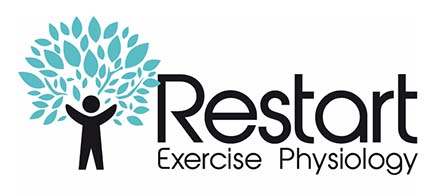Muscle, bone and joint injuries can be challenging and disruptive, affecting not only physical health but also emotional well-being. In this blog, we explore the physiological timeframes associated with holistic rehabilitation of such injuries and how a comprehensive approach is a must to significantly impact the healing process.
Timeframes for Holistic Rehabilitation
Before delving into the holistic approach, let’s first understand the key physiological timeframes for injury rehabilitation:
Acute Phase (days 1-7)
This phase immediately follows the injury and is characterised by inflammation, pain, and the body’s efforts to minimise further damage. The primary goal during this stage is to stabilise the injured area. You may be recommended to consult with a Physiotherapist who is best equipped to assist at this stage.
Subacute Phase (weeks 2-6)
Tissue repair and regeneration take centre stage in this phase. Inflammation gradually decreases, and the body starts rebuilding damaged tissues. Providing adequate progress is being made, this is when you may commence treatment with an Exercise Physiologist.
Remodelling Phase (weeks 7-12)
Collagen fibres and localised tissues reorganise, and neuromuscular adaptation occurs. The focus shifts to functional rehabilitation, aiming to restore normal movement patterns and strength.
Long-Term Rehabilitation (months 3+)
This phase focuses on building strength, flexibility, and preventing future injuries. It’s crucial for maintaining the progress achieved in earlier stages and ensuring long-term well-being.
More can be learnt on the above stages of healing by listening to Tissue Healing Stages by PT Snacks Podcast (6min duration).
The Holistic Rehabilitation Approach
A holistic approach to muscle, bone and joint injury rehabilitation recognises that healing is not limited to physical aspects alone. It involves addressing the individual as a whole and integrating various elements for a comprehensive recovery plan.
Nutrition
Proper nutrition plays a pivotal role in supporting the body’s healing processes. During the acute phase, an anti-inflammatory diet, rich in antioxidants and omega-3 fatty acids, helps control inflammation and promote tissue healing (click here to see example foods). As we progress through rehabilitation, we advise you to consider healthy eating guidelines to ensure adequate protein intake for tissue repair and the right balance of vitamins and minerals for overall recovery.
Sleep
Quality sleep is essential for recovery. We emphasise the importance of sleep hygiene to improve sleep quality and duration. In the acute phase, pain and discomfort may disrupt sleep, so strategies to mitigate these issues are crucial. As pain subsides, maintaining a consistent sleep schedule becomes essential to support healing and overall well-being.
An incredible resource to learn more on the vast benefits of achieving adequate sleep, is Why We Sleep by Matthew Walker.
Recovery Strategies
Effective recovery strategies are key to preventing setbacks during rehabilitation. A Physio may advise you to employ a range of techniques, including rest, ice, compression, and elevation (RICE), whereas an Exercise Physiologist can prescribe active recovery methods like gentle stretching and foam rolling. These strategies evolve as the rehabilitation process progresses, adapting to the changing needs of the injured area.
Mental Health
The psychological aspect of recovery is often underestimated but is crucial to overall progress. We place great emphasis on mental health and offer tools such as relaxation techniques, mindfulness, and visualization to manage stress, anxiety, and emotional challenges that can arise during rehabilitation. Staying patient, maintaining a positive mindset, and setting achievable goals are integral aspects of this holistic approach.
Lifestyle Factors
Holistic rehabilitation considers an individual’s lifestyle factors, including work demands, social support, and daily habits. We work with patients to adapt their routines and responsibilities to accommodate the rehabilitation process. This may involve modifying work tasks, incorporating movement into daily life, and fostering a support system to help individuals stay motivated and committed to their recovery.
Gradual Progression
A fundamental principle of holistic rehabilitation is gradual progression. At Restart, we understand that every person’s injury and recovery timeline is unique. We tailor rehabilitation plans to each patient’s specific needs, progressing exercises and activities at a pace that ensures safety and long-term success.
Conclusion
Musculoskeletal injury rehabilitation is a comprehensive journey that extends beyond physical interventions. It demands a holistic approach that encompasses nutrition, sleep, recovery strategies, mental health, lifestyle factors, and a gradual progression model. By addressing the whole person, we can optimise the healing process, enhance recovery, and empower individuals to regain their strength, mobility, and overall well-being.
It is essential to remember that rehabilitation plans should be personalised, considering the unique circumstances and goals of each individual. A collaborative effort between the healthcare team and the person undergoing rehabilitation is key to achieving the best possible outcomes. With dedication, patience, and a holistic approach, individuals can not only recover from musculoskeletal injuries but also emerge stronger and more resilient than before.
If your training is currently challenging and disrupted by an injury, book a Mobility Appraisal with myself. We currently offer this 45-minute appointment for $44 – in a short space of time we can devise a plan to have you performing at your best!
Anthony
References
- Guo, S., Di Pietro, L.A. Factors affecting wound healing. J Dent Res. 2010 Mar; 89(3): 219–229.
doi: 10.1177/0022034509359125
- https://foothillsrehab.com/blog/tissue-healing-timelines/, accessed 15th September 2023
- https://www.palladiumprivate.com/blog/the-biggest-benefits-of-holistic-rehabilitation-retreat/, accessed 15th September 2023

0 Comments